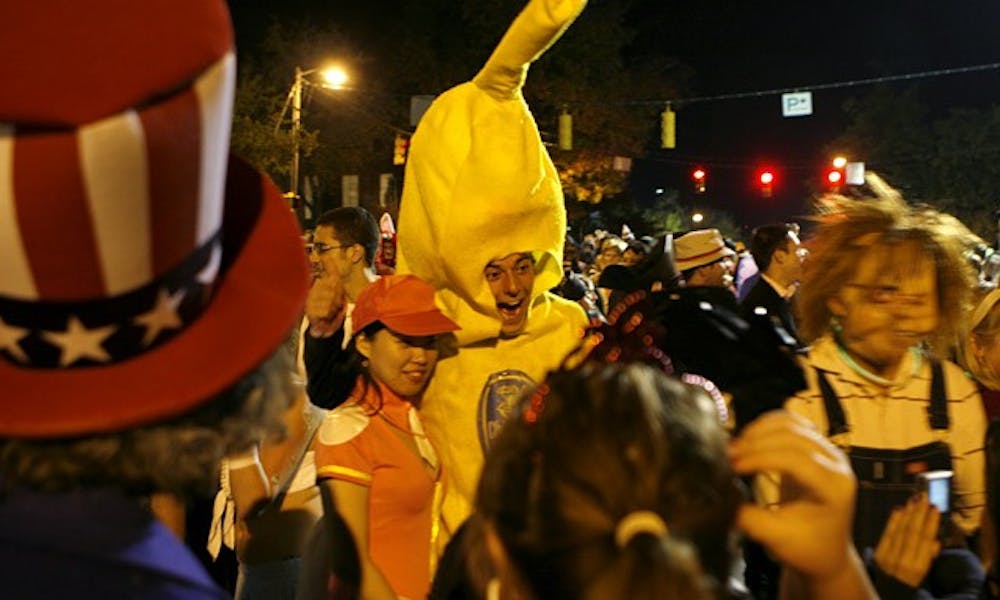On the last night of October, as darkness diffuses through the air and witches ascend into plumes of ominous clouds, we step into our costumes. We paint our faces, wrap feathered boas around our necks, and transcend the confines of our mundane appearances for one mysterious night. As shrieks of delighted fear echo throughout the streets, we promote false images of ourselves and ride this wave of illusion into November.
We wear the mask that grins and lies,
It hides our cheeks and shades our eyes…
While Halloween is the only night of the year that we readily acknowledge our costumes, humans are constantly building facades. At Duke, the most common form of trickery manifests on social media. Snapping millions of photographs each time that we congregate with friends or attend a noteworthy event, we scroll through our camera rolls, hungrily searching for an image that will promote an idealized identity. Once we find “the one,”—a colorful picture that catches eyes and causes fingers to momentarily stop scrolling through their newsfeeds, long enough to tap twice on the screen before continuing their prowl—we coat it in a filter and anxiously post it to Instagram.
At any given time, our social media pages convey a collection of desired traits: fun, carefree, attractive, smart and, the most ironic of them all, candid. We obsess over what picture to post and whether to post it, we spend little infinities crafting witty captions, and we contrive online identities that can be entirely different from the people we really are. With every picture uploaded, we add another accessory to our costume, and hope that it will pass as the truth.
Why should the world be over-wise,
In counting all our tears and sighs?
Nay, let the only see us, while
We wear the mask.
Outside of social media, there are the costumes we wear to perpetuate the impression that we can seamlessly “do it all.” Draped in sarcasm, with caffeine as our props, we parade through campus telling anyone who will listen that we “didn’t study at all,” and we’re “so unprepared,” regardless of the multiple hours actually spent dedicated to our work. This kind of deception does not stem out of malice, and we may not even realize the front that we put up by brushing off the hours of hard work and emotion that we invested in an assignment.
A few weeks ago, while kicking against the rapid succession of waves conjured by midterm winds, I spent one especially scary Sunday studying from 9 a.m until 3:45 a.m. Five hours later, as the dreadful sound of my alarm signaled my early morning lecture, I reached out for my phone and cynically sent a Snapchat to my friends, the words “it’s fine, I’m fine, everything’s fine,” pasted on the image. Although this was certainly not a ploy to seem overly successful, in just three short phrases, I had concealed how difficult that Sunday had really been.
Sometimes, we simply forget to take our costumes off. In a world where social media identities are accepted as interchangeable for real identities, and phrases like “it’s fine, I’m fine, everything’s fine” are normalized, we forget to prioritize the people beneath the masks. As we move through the motions of our daily routines, rotating our wardrobe of identities, we hardly ever pause to consider whether it’s all a ruse.
But what if we did? What if we decided to shed the capes? Wiping the paint from our faces and shaking our hair loose from elaborate sculptures, what if we just dressed as ourselves? Perhaps, if we reserved the costumes for a single and spooky night of Halloween, draining the extravagant illusion from everyday life, everything would be abundantly easier.
Although transparency can be daunting, like a full moon that peeks through charcoal clouds on Halloween, it can also be beautiful.
Let’s take off the mask.
Carley Lerner is a Trinity sophomore. Her column runs on alternate Mondays.
Get The Chronicle straight to your inbox
Sign up for our weekly newsletter. Cancel at any time.

